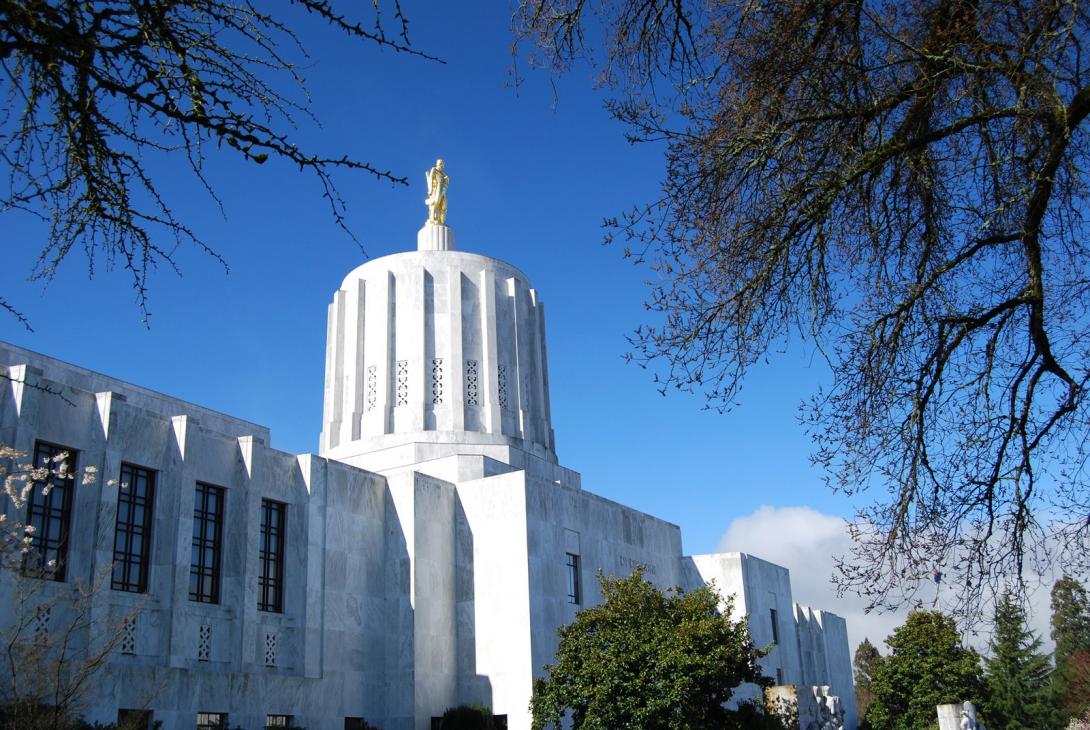
Sidelined for nearly five months by the coronavirus pandemic, a state panel has begun to study how to establish “universal health care” in Oregon.
The Task Force on Universal Health Care has limited time to come up with recommendations. Created by the Legislature, it is slated to produce a report for the 2021 session which would end next June.
The panel may become a vehicle for advocating a massive, government-run single-payer system in Oregon – although just how such a system would work, and how much it would cost taxpayers is unclear.
State Sen. James Manning, D-Eugene, a task force member and driving force behind the legislation creating the task force, said his main concern is that many Oregonians either lack health insurance or are “paying enormous premiums and are stuck with high deductibles,” so they avoid seeking health care.
One partial solution might be to expand the number of people eligible for the Oregon Health Plan, Oregon’s version of Medicaid, in which the state and federal governments cover the cost of health insurance, Manning said in an interview with The Lund Report. That could be accomplished by raising the income limit for the Oregon Health Plan, he said. The Oregon Health Plan currently covers only low-income adults and all children.
“I want to look at all the possibilities,” Manning said.
At Wednesday’s meeting, the group named as chairman Dr. Bruce Goldberg, a professor at the Oregon Health & Science University/Portland State University School of Public Health and former director of the Oregon Department of Human Services. Dr. Ed Junkins, a pediatrician and an associate dean at the Western University of Health Sciences in Lebanon was selected as vice chairman.
There’s no shortage of reading material about how states have tried to create universal health care systems. Task force member Dr. Sam Metz, a retired anesthesiologist, told the group he has assembled 55 studies that examined how to create single payer health care systems.
A number of states have considered universal-care type systems, but none have implemented them.
Whatever the panel recommends, it would be up to the Legislature to settle on key elements, including how such a system would be funded, and how it would treat the commercial health insurance market that covers private-sector employees and individuals.
Currently, about half of Oregon’s population of 4.3 million has health insurance paid for by the government: Medicaid, and Medicare for the elderly. The great majority of the money for Medicaid and Medicare comes from the federal government.
The other half of the population – the commercial market – consists of people who have health insurance through work or buy plans for themselves and their family through the state health insurance exchange or directly from an insurer.
Just how adequate and affordable that private-sector coverage is remains a topic of debate. Employees covered by government or large corporate employers may have health insurance for which they pay relatively low premiums and get comprehensive coverage with which they are pleased. But many employers may provide little or no health insurance. And workers with no employer-paid insurance may find that buying a policy through the exchange or directly from an insurer is prohibitive.
About 6% of Oregonians lack health insurance. How many have insurance that is excessively expensive and provides threadbare coverage is unclear.
Goldberg told The Lund Report that he wants the group to produce a plan ensuring that every Oregonian has “comprehensive, affordable and equitable” health insurance. He said he doesn’t know how many Oregonians currently lack such insurance. He said he also wants the plan to have “public approval, political approval, and be financially achievable.”
“I don’t want this to be something that sits on a shelf,” he said.
Task force members said they want, among other things, to consider a proposal that state residents with no or low-quality insurance be allowed to buy into a Medicaid-like insurance plan. The Medicaid-like buy-in concept has been studied for several years and offers the prospect of being less expensive than private insurance. Under such a system, a resident could buy Medicaid-grade coverage for the same price that the state pays for that coverage through regional insurers known as coordinated care organizations. Currently, the state, using federal and state money, pays regional coordinated care organizations roughly $6,000 per person per year to cover the health-care needs of each low-income resident on the Oregon Health Plan. That might be cheaper than the $7,000 or $8,000 the person might have to pay for equivalent private insurance.
The task force has a lot of ground to cover, given that it lost four months from March through June when no meetings were held.
Among other tasks: create and implement a program for soliciting public comment.
One Portland group is already urging residents to get involved. The nonprofit Nurses for Single Payer has asked members to prod state lawmakers to ensure the task force has enough money for staff and research. Nurses for Single Payers is led by Adrienne Enghouse, a registered nurse who formerly was president of the Oregon Federation of Nurses and Health Professionals, a labor union that represents a variety of health care workers in the Kaiser, PeaceHealth and Providence systems.
You can reach Christian Wihtol at [email protected].